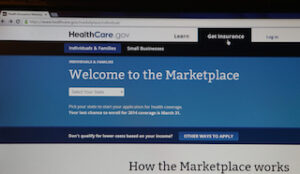Millennials are slowly taking over the workforce.
Even though unfair stereotypes have deemed them the “lazy” generation, nearly 56 million Millennials are working or are looking for work. As the generation that makes up the largest percentage of the current workforce, Millennials are beginning to accrue savings, settle into their careers and are even making their way to the top positions in their companies.
But climbing to the top of the food chain isn’t the only thing Millennials are doing. As many Millennials attain greater professional achievements and grow their incomes, they are also incurring financial commitments and starting families.
These key milestones in Millennials’ lives could leave them at greater risk if they were to experience a disabling health condition or need to take time off to care for a seriously ill family member. That’s because many haven’t properly protected their income and could, unknowingly, be exposed to significant gaps in their disability coverage.
Having insight into what motivates Millennials and what they need from their coverage can help you better start the conversation about income protection and the need for individual disability insurance (IDI). This approach can help prepare your clients for whatever life brings their way.
Understand Millennials’ values and motivations
Thanks to the 2008 recession, Millennials had a slower start to their careers. But, as the economy gets back on its feet, Millennials are doing the same. Ranging from 22 to 37 years old, Millennials are starting to make more than their older counterparts.
This age and responsibility also bring new concerns. Nearly 82% of the births in 2016 came from Millennial mothers. In addition to starting families, older Millennials are also joining the sandwich generation, and may be involved in caring for aging parents and other loved ones.
Not only that, as Millennials age, they are also accumulating wealth. While many Millennials took longer to start families and purchase housing, they are already starting to influence the housing market. According to the U.S. Census Bureau, the homeownership rate among households headed by someone under the age of 35 increased the most out of any generation in 2017, going from 34.7% in 2016 to 36%.

Millennials finding their footing in adulthood presents you with a huge opportunity to tap into this market for IDI sales. Gaining an understanding of the Millennial mindset and their life stage can better equip you for having conversations about the need to protect their income.
Personalize the IDI sale for Millennial needs
Millennials have grown up in an era of personalization. From technology to clothing, food to transportation, this generation has come to expect customizable products that meet specific needs.
The fact that IDI policies can be personalized to meet Millennials’ professional and personal milestones could catch their attention.
Most IDI plans have strong core benefits that can help clients protect their income. These policies often come with accompanying riders that can help tailor coverage to match their occupation, life stage, family needs and income. As Millennials grow both personally and professionally, you can help ensure their IDI coverage matches their life achievements.
Protect salary increases
Some IDI policies include built-in benefits or riders that can help clients ensure their coverage matches their current salary. As Millennials progress in their career, some policies can automatically keep pace with their rising income each year for a set number of years. This helps ensure that as Millennials grow professionally, their coverage will match these achievements.
Another way for a client to increase coverage throughout their career is by adding a rider that allows for periodic benefit increases. Instead of increasing policy benefits each year, a benefit increase rider allows your client to increase his or her benefit payout every few years to keep pace with income increases on the policy anniversary — without the need for medical underwriting. This is yet another way to ensure a client’s policy stays current with salary increases and provides adequate income protection, with no additional cost.
Family caregiving benefits
Another coverage feature that may resonate strongly with the Millennial audience are the family caregiving benefits some carriers offer. As older Millennials enter their mid- to late-30s, they are entering the sandwich generation, as their parents and loved ones are aging as well. Family caregiving benefits through an IDI policy can help individuals take time away from work to care for a loved one and still receive the majority of their regular income. By having IDI, your client can have peace of mind while caring for others.
Student loan support
Millennials are in various life stages. They may be pursuing higher education, starting their first job, starting a family or climbing the corporate ladder. Yet, most of them have one thing in common: student loan debt. With the increasing price of higher education and nearly 4 in 10 people under the age of 30 having student loans, this debt can be a giant cloud hanging over Millennials’ heads. As Millennials work their way through paying off debt, the student loan coverage offered by some IDI plans could be a selling point.
If a policyowner were totally disabled, some policies include a rider that pays for an additional benefit to reimburse the individual’s student loan payments. This student loan payment is in addition to the regular benefits they would receive if they became totally disabled. This reimbursement payment could help Millennial clients — especially in medical or dental professions where student loan debt can be significant — ensure they wouldn’t fall behind in their student loan payments, should they experience a disabling injury or illness.
Additional perks
There are a few other points about purchasing IDI that may resonate with younger clients. First, the underwriting process for securing IDI coverage can often be easier the younger and healthier a client is.
Younger clients also can go through a less extensive underwriting process, often avoiding the medical and financial underwriting.
Simplified underwriting can be ideal for a young, healthy applicant who is just starting in his or her career and earning at a lower income point than other prospective IDI clients (such as physicians or engineers). When underwriting a client through a simplified underwriting program, carriers will have eligibility restrictions based on the client’s age and a benefit amount.
Another point to address to Millennials who are considering IDI coverage is that, once they’ve received underwriting approval, their premium and policy provisions can be locked in place for the duration of the policy — if premiums are paid on time. This can mean a client could have a policy for decades and pay the premium amount based on the original issue age in his or her 20s or 30s.
As Millennials achieve more, it presents you with an opportunity to reach out and make sure that all they’ve worked for is protected. Whether they are part of the C-suite or a start-up, IDI can play a role in protecting a Millennial’s future income and family.
About Jill Frohardt: Jill Frohardt is a regional director of Individual Disability Insurance sales for The Standard. Frohardt is an experienced insurance wholesaler who enjoys working with distribution partners to expand their operations, create new markets and grow sales.













